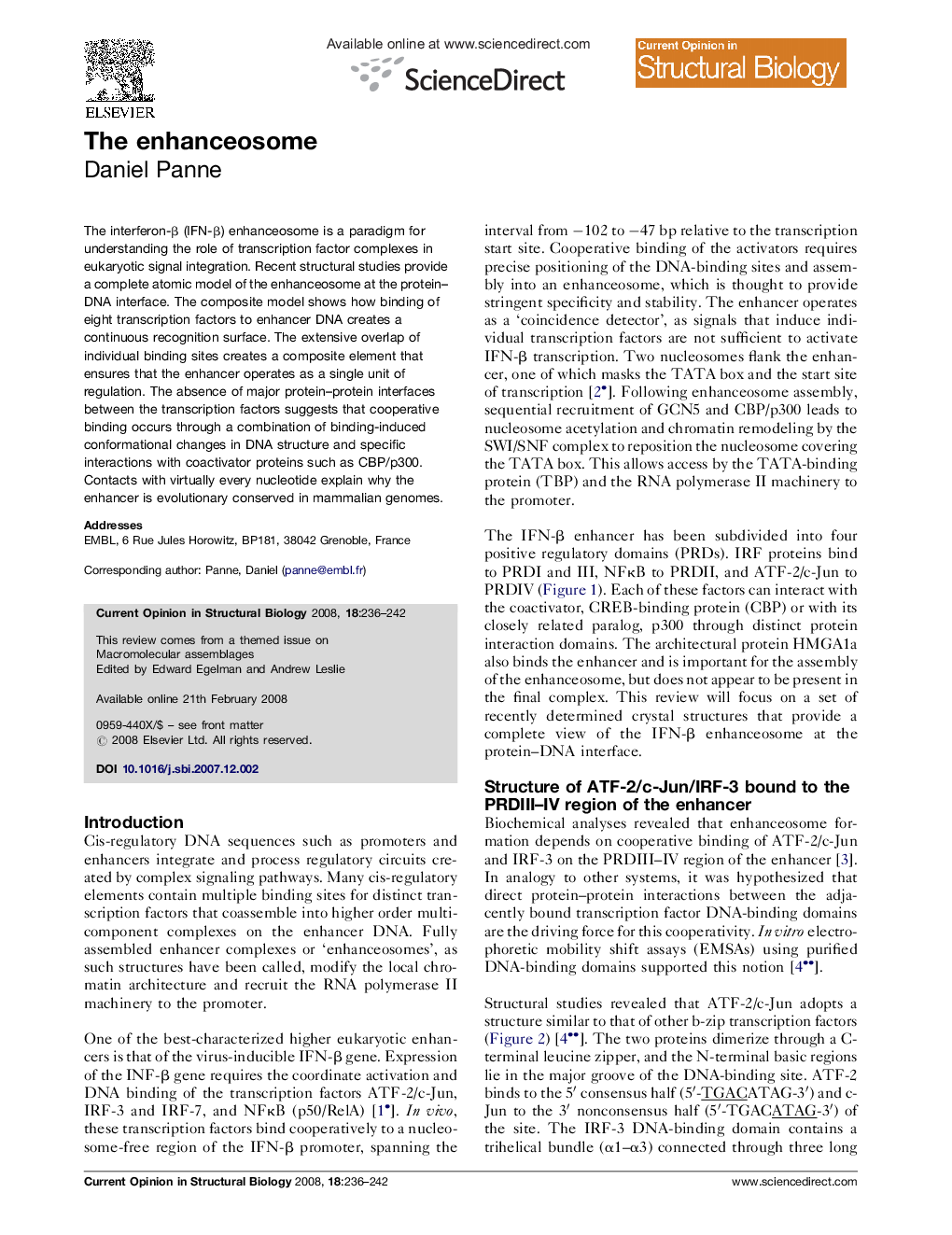| Article ID | Journal | Published Year | Pages | File Type |
|---|---|---|---|---|
| 1979765 | Current Opinion in Structural Biology | 2008 | 7 Pages |
The interferon-β (IFN-β) enhanceosome is a paradigm for understanding the role of transcription factor complexes in eukaryotic signal integration. Recent structural studies provide a complete atomic model of the enhanceosome at the protein–DNA interface. The composite model shows how binding of eight transcription factors to enhancer DNA creates a continuous recognition surface. The extensive overlap of individual binding sites creates a composite element that ensures that the enhancer operates as a single unit of regulation. The absence of major protein–protein interfaces between the transcription factors suggests that cooperative binding occurs through a combination of binding-induced conformational changes in DNA structure and specific interactions with coactivator proteins such as CBP/p300. Contacts with virtually every nucleotide explain why the enhancer is evolutionary conserved in mammalian genomes.
